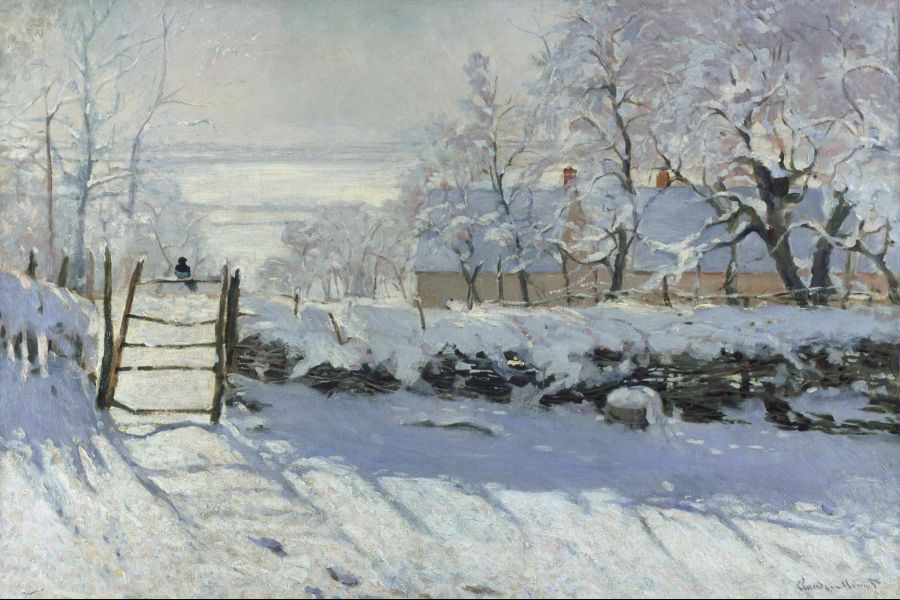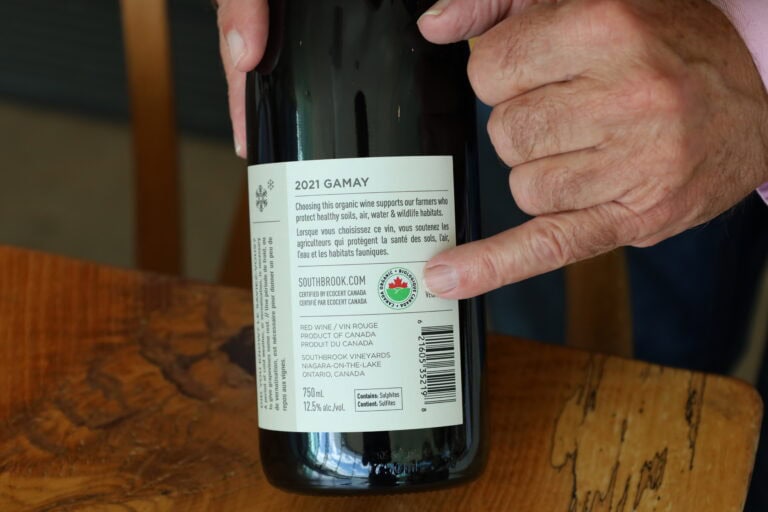In 1868, Claude Monet (1840-1926) was in Paris, committed to painting, selling little, submitting work to the Salons but being rejected, seriously in debt, with his soon to be wife and model, Camille Doncieux, expecting their first child.
A new patron, appreciative of his work, offered a cottage near Étretat, on the coast of Normandy, to the floundering young couple. It was to be one of the happiest periods of the artist’s life and career. By day, he painted outdoors, returning to the cottage to nestle before the fireplace with Camille and their son, Jean.
The most famous of his snowscapes, “The Magpie, was created at this time. Why is it so popular, according to postcard sales at the d’Orsay? Why does it profoundly resonate with the viewer?
For those of us who live with winter and snow and are keen birders it seems straight forward enough but that doesn’t answer the questions.
In 1868, a Journal du Havre article by Léon Billot described the scene: “It was cold enough to split rocks. We glimpsed a little heater, then an easel, then a gentleman, swathed in three overcoats, with gloved hands, his face half-frozen. It was M. Monet, studying an aspect of the snow … this pleased us. Art has some courageous soldiers.”
Monet was resolute in his desire to observe and depict nature in new ways. Early on, he was influenced by Eugène Boudin to paint en plein air (made possible by pigment in metal tubes and portable easels) and by the Dutch painter Johan Barthold Jongkind advocating the use of optical colour, what is actually perceived, as opposed to local colour, what is conceptualized.
There were Chevreul’s new colour theories and many shared ideas with the other artists, soon to be known as the Impressionists, keen to capture on canvas the fleeting nuances of changing light. In “The Magpie,” Monet is using coloured shadows, not the traditional academic black, to investigate the actual changing conditions of light and shade.
He restricts colours to complementary blue, yellow and earth tones and with loose, short and rapid brushstrokes he creates movement highlighting reflections in the snow. The blue violet shadow of the wattle fence contrasts with the spatial clarity of the focal point of the work, a magpie perched on the top rung of a gate.
The shadow of the gate and the magpie is reflected on the snow, in a five rung diagonal line directly to the foreground, to possible footprints, to Monet, to us. Its form is softened, but our perception of it is sharpened.
For Monet, “the motif is altogether secondary, what I want to represent is what exists between the motif and me.” If it was about fugitive light and colours for Monet, for us it’s about memories. You cannot enter an Impressionist painting. You receive and what you receive depends on what happens between you and it.
For me, “The Magpie” recalls fiercely cold, bright days on a bluff overlooking the South Saskatchewan River. The dry air is so fresh it scrapes the lungs and waters the eyes. Boots squeak and scrunch on sparkling snow until one stops, motionless, to admire the regal strut of a magnificent black billed magpie with iridescent purple and blue plumage.
In a moment, it fans a two-foot wide black and white wing spread and with a loud ka-ka-ka-ka breaks the silence to vanish into the sun. And, as to Monet’s magpie, we know, as did he, that it will fly off at any moment, and that memory and loss will remain the central core of his work.
Penny-Lynn Cookson is an art historian who formerly taught at the University of Toronto and was head of extension services at the Art Gallery of Ontario. Watch for her upcoming series, “The Venetians” for RiverBrink Art Museum, Feb. 17 to March 24 on Zoom.










